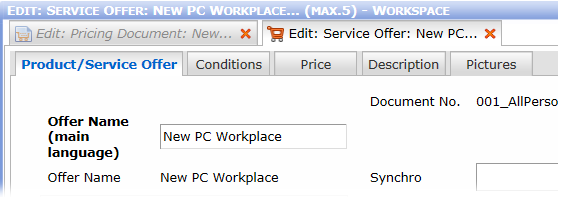Customization Considerations
From the view point of multilingual translations, two types of end users can be distinguished:
- Users who enter the data and translations
These users should be authorized to use the 'Translate' action. They will also benefit from having values in both the main and current language displayed.
- Users who only use the data
GUI customized for use by these users should display the translated attributes only in the current language and it should not provide the 'Translate' action.
The 'Product / Service Catalogue' in standard 'SRM & Procurement Manager' can serve as an example of such distinction.
End User
The 'Product / Service Catalogue' itself is aimed at end users simply choosing the listed items. There is no need for this catalog to provide the 'Translate' action. Its multilingual support is limited to containing the 'current language' attributes.
User who enters data
On the other hand, administration of the 'Product / Service Catalogue' is performed via offer packages and offers (formerly referred to as pricing offers). Individual offers represent the 'Product / Service Catalogue' items and thus offers and their related objects (included options, categories) need to provide tools for multilingual support administration.
- Editors and catalogs provide the 'Translate' action

The 'Translate' action in the 'Offers for items which can be requested' reference catalog of an offer package editor - Editors display translated attributes in both the main and current language.

The Offer editor contains the 'Name' attribute in the main and current language
Note: The above mentioned offer packages can be accessed from the 'Product / Service Catalogue Administration' catalog in the 'Requesting Process Configuration' side bar folder of 'SRM & Procurement Manager'.